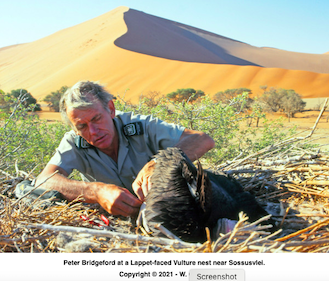Protecting Namibia's Lappet-Faced and White-Backed Vultures
- Worth Wild Africa

- Sep 7
- 2 min read
Updated: Sep 26
WWA's Big Five Drive in Namibia raises funds for Vulture conservation

The Vultures Namibia Project works in national parks and on numerous private farms in close conjunction with the Ministry of Environment, Forestry and Tourism with the aim of raising awareness and collecting ecological distribution, movement and breeding data of mainly the Lappet-faced and White-backed Vulture.
The VNP maintains trail cameras at waterholes across the country and organises aerial surveys with volunteer pilots using their own aircraft to locate nests, and then visits them to ring and tag the vulture chicks and fit satellite trackers.
An initial donation of $2,000 in 2023 with WWA's Big Five Drive Namibia was used for the purchase of more trail cameras and superior computer capacity for VNP to run a specifically designed rapid AI programme that recognises and extracts photos of patagial-tagged vultures at waterholes, vulture restaurants and random carcasses. This provides much improved coverage of vulture movements and better insights into their survival from the nestling stage. Previously the several million photos catalogued required manual examination.
WWA made a second donation of $2,000 in 2025.
The Project reported back in mid-2025:
We have almost completed our annual survey and marking of chicks for the 2024 breeding season. This has included both the Namib-Naukluft Park and, for the second year running, a portion of Damaraland. Numbers of breeding birds this year exceeded that of last year. We have so far marked a total of 46 Lappet-faced Vulture chicks this season. Additionally, 7 satellite trackers will hopefully be deployed once the chicks are old enough.
The project recording tagged birds (mainly at waterholes) goes from strength to strength. The process of extracting and recording tags from photos has been greatly streamlined. This is due to the new equipment, so kindly and generously sponsored by yourselves, which saves us a considerable amount of time in identifying birds with tags. We now have in excess of 10 million photos in our library which have been downloaded from our camera traps.
These photos have yielded 10 000 records of Individually marked birds. A record is counted as a sighting of a tagged bird per day. Many birds have been recorded multiple times.










Comments